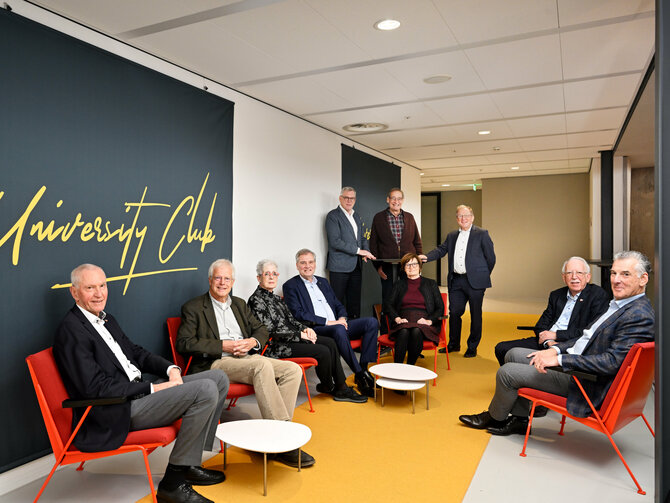Our thematic funds
The way forward: Our thematic funds
In the past, humanity has taken paths that have brought us where we are today: face to face with the consequences for our planet. For our future. The world is working on solutions, but not fast enough.
Fundamental challenges like climate and our health require basic research. To make that possible, we have set up two funds: the TU/e Energy Tech Fund and the TU/e Health Tech Fund.
This is how we and our donors contribute to sustainability and a better quality of life. We support the talent that will help achieve these goals in their development.
Will you help us help them?
The theme funds were created in part thanks to: (from left to right) Martin Schuurmans, Hans Fischer, Victoire Schuurmans, Eric van Schagen, Bert van der Els, Harry Otten, Lammie Nijsingh Els, Ton Backx, Sander van 't Noordende, Robert-Jan Smits, Harrie Noy and Henk Kivits.

Energy Tech Fund
For projects where technology contributes to the energy transition. Click on a project for a more detailled description.
Health Tech Fund
For projects that, based on technology, promote our health, increase the chance of survival with (complex) medical problems, significantly reduce the impact of medical problems or even save lives. You can read more about this fund and the projects that may be funded from it here.
Donators
NEW PERSPECTIVES ON EXISTING CHALLENGES
Basic research. The weapon of our scientists in the search for answers to the questions of today and tomorrow. They do not focus on improving existing technologies, but on real innovations. Starting from systems thinking, they search for new fuels, new ways to store energy and more. And they develop methods of using technology to improve and even save lives.
FINANCIAL SECURITY. ALSO IN THE LONG TERM
The outcomes of these projects are potentially groundbreaking, but also uncertain. The combination with long durations makes funding challenging. Often these projects get their funding from multiple, smaller donations. But for optimal results, the very certainty of long-term funding is enormously important.
CERTAINTY PROVIDES FOCUS AND PERSPECTIVE
By contributing to our theme funds, you offer these projects that much-needed certainty. And you contribute to projects that can really make a difference.
No longer dependent on many smaller donations, these projects can also look to the long term. A committee of top scientists and administrators selects the projects that can claim a contribution.
Would you like to contribute?
The theme funds are geared toward larger donors who thus benefit from privileges and tax advantages arising from our ANBI status. Of course, smaller amounts are also welcome.
Click here for information on donating. Or contact our University Fund representatives.